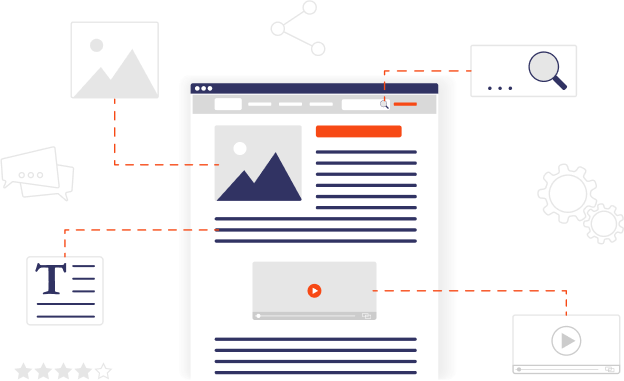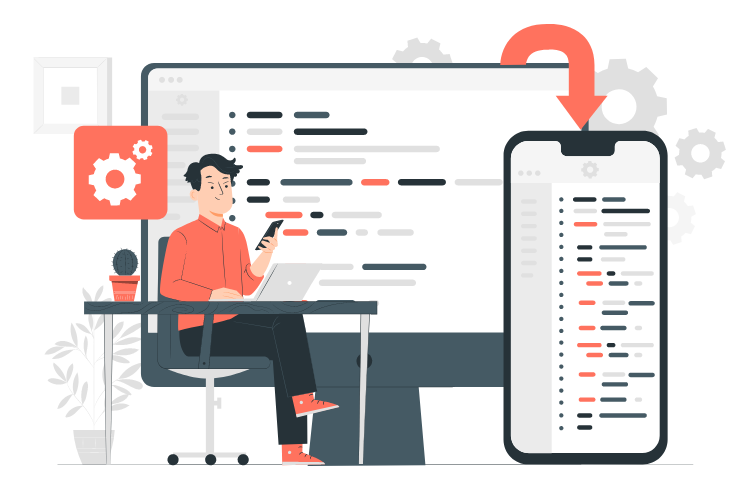The development of an application can seem simple. However, building a mobile app is more than just having a creative idea and picking a platform. App development requires a significant investment of time, money, and human resources. The average cost of developing an application is generally accepted in the range of $50,000 to $200,000. But these costs only include the development of the application.
App Development Lifecycle
The mobile app development lifecycle is the process of creating an application from start to finish.
1. Concept and Design: During this stage, product requirements are defined and your vision for the application’s user experience is created in a specification document.
2. A Prototype: It is basically a rough draft of your idea that you can show customers before it’s finished, allowing them to provide feedback and help guide the design process. Prototypes are essential if you want to make sure your application will meet customer needs and expectations—and they’re also necessary if you want investors or other potential backers to support its development.
3. Development: Your app will be built in accordance with its specifications. If you’re working with outsourced developers, it’s crucial that they follow best practices like Agile methodology to ensure they deliver high-quality software at an efficient pace (and on a budget).
4. Testing and Debugging: It’s not enough just to create a functional piece of software; it must also perform well when put into action by real users. The testing phase ensures that each feature works as intended before being released into production so that any bugs can be identified early on rather than after launch day arrives—and become public knowledge!
The time to complete this cycle is typically between three months and one year, depending on the complexity of the app. The costs of application development would depend on the complexity and size of the project.
Ongoing Support & Maintenance
It’s important to note that ongoing support and maintenance is an essential part of any mobile app development process. It is not just about building the app; it also involves keeping an eye on how users are interacting with it, making necessary adjustments, fixing bugs and adding new features if need be.
There are ongoing costs involved in developing software such as maintenance fees and preventing bugs from cropping up. If these things aren’t accounted for at all stages of development then they may end up costing more money later on in production than they would have had they been included during initial planning stages.
The cost of maintaining an application depends on the type of application development and its complexity. The first step in reducing the maintenance cost is to ensure that your system is well documented; this will make it easier for others to understand how it works. You should also use open-source software whenever possible because this allows you to take advantage of the work done by others without having to pay for it.
Integration Management
Integration management is the process of ensuring that all systems and subsystems work together. Integration management costs can be substantial, depending on the complexity of your application’s architecture. The more complex your application, the more expensive it will be to integrate all its components efficiently and effectively.
Fortunately, there are ways to reduce these costs: using a cloud-based solution will lower your bottom line considerably since it automates many aspects of integration management that would otherwise require manual labor and large amounts of time.
Quality Assurance Testing
Quality Assurance (QA) Testing is the process of identifying and removing bugs from a software product with the help of automated tools.
The main goal of QA testing is to make sure that the application works as expected. This can be achieved by testing every aspect of an application, including functionality, usability, accessibility and performance. The cost of quality assurance testing depends on various factors such as the number of products being tested, the team size, and the type of software.
Performance and Scalability
Performance is the speed at which your application runs. This can be measured by how quickly it responds to user input, how fast a transaction completes, or in other measures based on real-world usage scenarios.
Scalability is increasing its capacity to handle more users, data, and tasks. There are several ways to scale applications, including:
Scaling up: Adding more hardware resources to a single machine
Scaling out: Splitting up workloads across multiple machines
Scaling down: Eliminating unused servers in order to save money on cloud computing costs
Horizontally (adding more CPUs or RAM): Increasing the processing power of an individual server when it’s under load or running low on resources
The Average Cost of Building an App Internally vs Hiring a Development Agency
The cost of building an app depends on several factors, including the complexity of the app, its platform and features, and whether you outsource its development.
In general, developing a mobile application costs 2023 from $5,000-$50,000 for a simple app. Medium to complex apps can range from $50,000-$250,000. But if you’re looking at hiring an outside agency to build your app for you instead of doing it in-house—which can range anywhere from $50k-$200k—you’ll probably save yourself money in the long run.
Mobile Platform for application
The platform you choose for your application depends on the audience you want to reach and how much money you have. If the majority of your target audience is on iOS, then an iPhone app will be more effective than an Android app. The same goes for other mobile platforms: Windows Phone users are less likely to use a mobile website than Apple or Google fans are, so consider creating native apps for those users instead of relying on a mobile website.
Impact of costs on features and functions
“Real costs” are the total cost of ownership over the life of an application, including all costs associated with building it and maintaining it. Those types of “real” expenses can impact different parts of your business especially if you’re a small or medium-sized organization. Because they can affect performance, scalability, and even user experience (UX/UI), real costs will also impact:-
The features in your application—if these aren’t important to your users then don’t include them!
Quality assurance testing is required before launch—make sure you have enough time for this step!
Integration management once you go live—you want to make sure everything works as intended for every user on day one so beta testing beforehand is suggestable!
Conclusion
The real costs of application development are a lot more complicated than it seems. Many people don’t realize that there are several factors that go into determining the final price tag, such as hourly rates and expected costs. There are also unexpected costs, which can add up quickly if you don’t have a handle on them from the start.
We know from experience that application development that is done without proper planning and monitoring can result in delays and cost overruns. This is the main reason numerous organizations fail to utilize an application properly or develop a robust application that actually serves the business needs of the organization. As a result, we are here to help you build your application. Click here to know more about our services.



